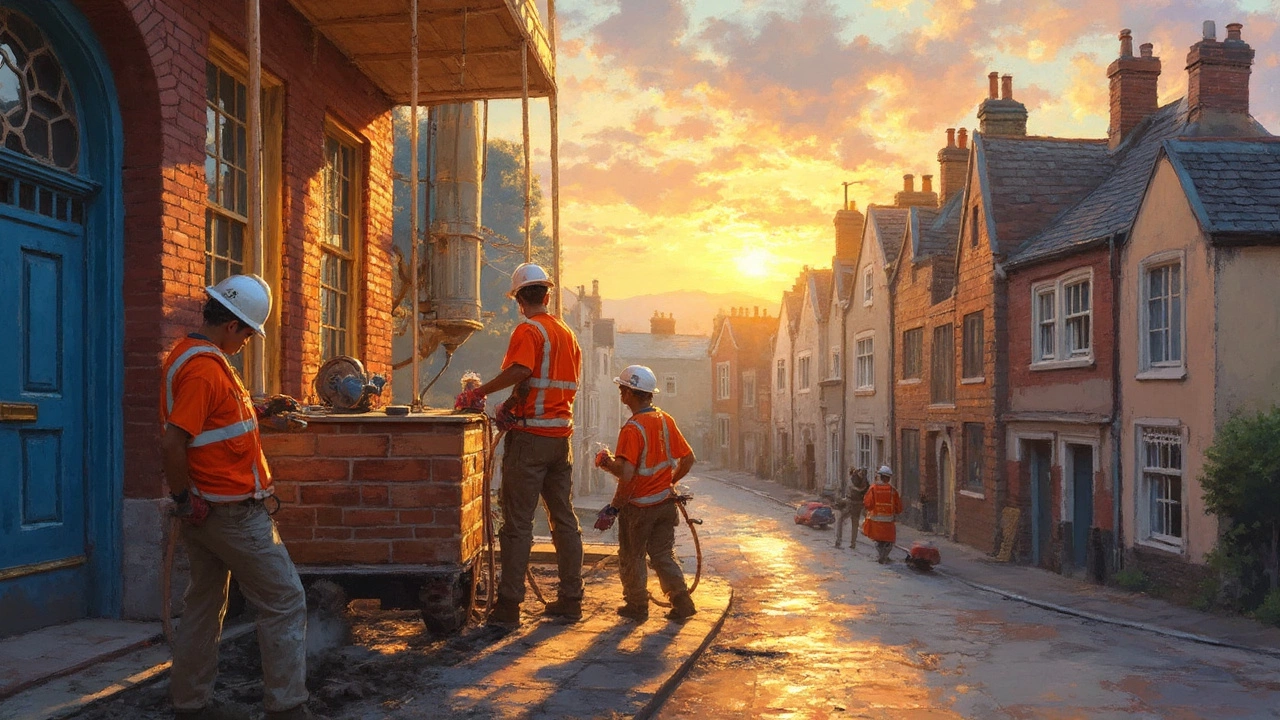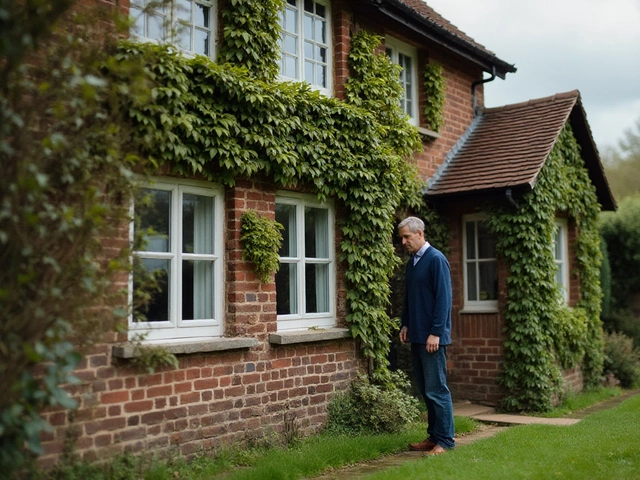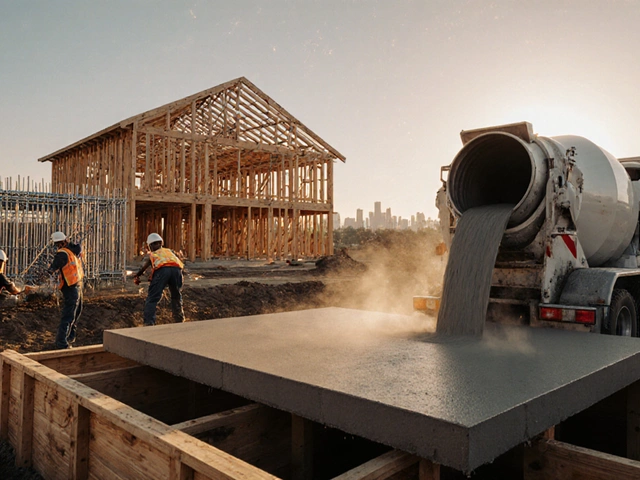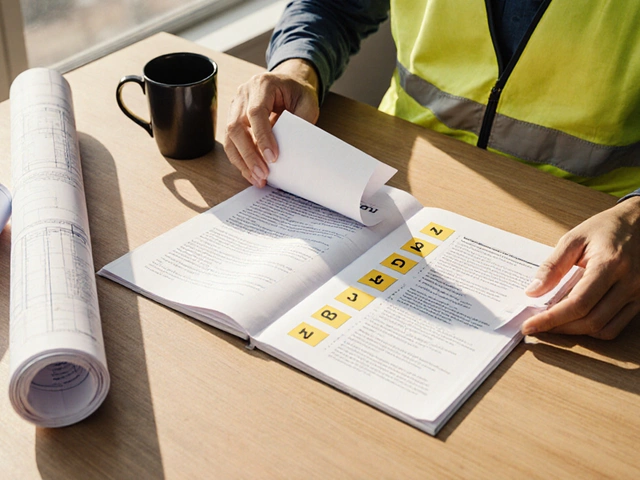Considering a DIY approach for repairing your home's foundation? It sounds tempting to roll up your sleeves and handle the job yourself. Before diving in, let's talk about what foundation issues really look like and whether these tasks are truly DIY-friendly.
First off, identifying the problem is key. Some telltale signs include cracks in walls, uneven floors, and windows or doors sticking when you try to open them. Recognizing these early is crucial in avoiding bigger headaches down the road.
Next, consider the scope of a DIY foundation repair. It’s not just about filling a crack here or there. Foundation work can be complicated and labor-intensive. Do you have the right tools? Are you confident in your ability to handle potentially heavy lifting and precise leveling?
And let’s be honest: safety is a huge factor. If you're hesitant, it might be time to weigh the pros and cons of doing it yourself versus hiring a professional. Sometimes peace of mind is worth the investment.
- Identifying Foundation Problems
- Understanding DIY Risks
- Tools and Materials Needed
- Step-by-Step Repair Tips
- Knowing When to Call a Professional
Identifying Foundation Problems
Spotting foundation issues is the first step in planning any foundation repair. It helps to know what to look for to avoid any nasty surprises.
Common Signs to Look Out For
Your home's foundation might be in trouble if you notice the following signs:
- Cracks in Walls and Floors: Vertical or horizontal cracks in your home's walls or floors can indicate shifting or movement in the foundation.
- Doors and Windows Sticking: If doors and windows stick or don't close properly, it might mean your foundation is uneven.
- Gaps Around Window Frames: Look closely at the window frames. Gaps or misalignments can signal foundation settling.
- Sloping Floors: Uneven or sloping floors could spell trouble, hinting at possible foundation movement.
- Water in Basement: If water is pooling in the basement after rain, your foundation might be leaking or improperly graded.
Monitoring Changes Over Time
It's not just about spotting these issues once. Keep track of how these problems develop over time. Take note of any progression or new signs that appear.
Tools for a Quick Check
You don't need to be a pro to start checking for these issues. Grab a level and some chalk. You can test for sloping floors with the level and mark any noticeable changes in cracks with chalk to monitor if they’re getting worse.
When to Get a Professional Opinion
Sometimes, a tiny issue is just surface deep. Other times, it hints at something bigger lurking below. If you're unsure, or if the cracks are wider than a quarter inch, don't hesitate to call in a professional. Catching these issues early with a thorough inspection can save a ton of trouble later.
Understanding DIY Risks
Thinking about repairing your foundation yourself? Hold on a minute. Tackling foundation repair is not the same as fixing a squeaky hinge. It's a whole other beast. Here's what you should know before diving headfirst into this challenge.
Unexpected Costs
DIY foundation repair might seem like a money-saver up front, but without the right expertise, costs can spiral. Imagine buying special tools you’ll only use once or having to redo a project because it wasn't done right the first time. Those costs add up fast.
Structural Integrity
Your home's foundation isn't just another component—it's what holds everything up. Incorrect repairs could compromise the structural integrity of your home. That means those foundation issues might worsen over time, causing more than just a few cracks.
Safety Concerns
Working on a foundation is not without its dangers. If you're not used to handling heavy tools or working in confined spaces, you’re putting yourself at risk. One slip-up could cause significant injury or further damage to your home.
Problem Identification
Professionals have trained eyes. They can spot issues that aren’t always obvious. What looks like a simple crack to you might signal a deeper problem. Misdiagnosing the issue could lead to a band-aid fix rather than a permanent one.
Warranty and Insurance Issues
Many home insurance policies have specific stipulations regarding foundation work. DIY repairs might void warranties on existing systems if they are incorrectly done. It's worth checking these details before proceeding.
| Risk | Professional Fix | DIY Attempt |
|---|---|---|
| Cost Overrun | Low Risk | High Risk |
| Project Time | Short | Long |
| Safety Hazard | Low | High |
Foundation repair might look like a DIY opportunity, but the risks are real and significant. If you're feeling overwhelmed, it might be best to bring in a pro who knows the ins and outs of these repairs.

Tools and Materials Needed
Tackling a DIY foundation repair is no small task, so gathering the right tools and materials is essential. Having the wrong gear can turn an already challenging job into a nightmare. Here’s what you’ll likely need:
Basic Tools
- Shovels and Spades: You’ll need these for digging around the foundation. Go for a sturdy shovel that won't bend or break easily.
- Level: A quality level is key to ensuring your repairs are even. Opt for a laser level if possible; it offers better precision.
- Masonry Tools: Trowels, mortar boards, and pointing tools will come in handy if you're patching cracks or rebuilding blocks.
Specific Equipment
- Hydraulic Jacks: If you’re lifting sections of the house, hydraulic jacks are your friends. These provide the power you need to make significant adjustments.
- Drill and Mixing Paddle: You’ll use these for mixing repair compounds. A powerful drill with a mixing paddle attachment handles the job well.
Materials
- Concrete or Epoxy Mix: Depending on the damage, you might need concrete for large areas or epoxy for smaller cracks.
- Waterproofing Materials: Consider coatings or membranes to prevent future water damage after repairs are done.
- Backfill Material: Typically sand or gravel, these fill in and support the areas around the foundation once repairs are complete.
Having these tools and materials ready from the get-go can make your DIY job much smoother. Just remember, starting without the proper gear can cause more harm than good, leading to costly mistakes. When in doubt about foundation repair, consulting a specialist might save you time and money in the long run.
Step-by-Step Repair Tips
Ready to tackle your own foundation repair? Let’s walk through some basic steps to get you started. Remember, this guide is for smaller, manageable fixes. If you’re dealing with extensive damage, calling in the pros might be your best bet.
Assess the Damage
Before you get going, make sure you really understand the problem. You’re looking at cracks in the walls, uneven floors, or maybe a sinking corner of the house. These issues can range from minor to severe, so get a good look at what you’re dealing with.
Gather Your Tools and Materials
You’ll need specific tools to take on this DIY foundation repair. Essential items include:
- Safety gear like gloves and goggles.
- A wire brush to clear debris.
- Concrete patching compounds.
- Hydraulic cement for stopping leaks.
Make sure you have everything before you start, as running back and forth to the hardware store is a real time killer.
Repair Small Cracks
For minor wall cracks, start by cleaning the area with a wire brush. You want all loose pieces removed. Apply the concrete patching compound with a putty knife, smoothing it evenly. Follow this with a coat of paint to match your walls.
Fixing Leaks
If you notice leaky cracks, hydraulic cement is your friend. Mix according to the package directions and press it into the crack. This substance expands as it sets, making it perfect for keeping water out.
Stabilize Uneven Floors
Dealing with uneven floors? Try shimming in the short term. You’ll slip a steel shim in between the foundation and the settling structural element. Be cautious with this, as precision matters.
Consider Long-Term Solutions
If these repairs work well, that’s great. But if problems persist, it might be time to think about hiring professionals for underpinning or mudjacking. Sometimes, only a pro can provide the peace of mind you're after.
Keep in mind, safety always comes first. If at any point you feel out of your depth, don’t hesitate to get an expert’s input. Foundation issues aren't something to take lightly!

Knowing When to Call a Professional
Taking on a foundation repair yourself can seem like a budget-friendly idea, but there are times when it's best to let the pros handle it. Here's how to know when to make that call.
Serious Structural Issues
If your house has major cracks that are wider than a quarter inch, or there's noticeable sinking or shifting of the foundation, it's time to get professional help. These are signs of potentially serious problems that could affect the structural integrity of your home.
Lack of Experience
Be honest about your own expertise. If you've never tackled a home improvement project of this scale, the risks might outweigh the rewards. Foundation work is not just about fixing what's visible; it's about ensuring the entire structure is sound. A professional has the know-how to assess and fix all underlying issues.
High-Quality Resources
Professionals have access to specialized tools and materials that might not be available to the average homeowner. They know industry-grade options that could save your home from future damage, thus saving you more money in the long run.
Licensing and Insurance
Hiring a pro often means they have the necessary licenses and insurance to back up their work. If something goes wrong, you're covered. Doing it yourself? You're on your own, risking further expenses or damage without any safety net.
| DIY vs. Professional | Factors |
|---|---|
| DIY | Lower initial cost, requires personal time, higher risk if inexperienced |
| Professional | Higher cost, saves time, lower risk with expertise |
Peace of Mind
Ultimately, choosing a professional means peace of mind. Knowing the job is done right by someone with years of experience allows you to rest easy. It might cost more upfront, but the lasting security can be a worthwhile investment in your home's future.
Your home is likely your biggest asset. Don't let foundation issues linger. When in doubt, call in the experts. They'll give you a clearer picture of the situation and set you on the right path, ensuring your home remains safe and sound.







